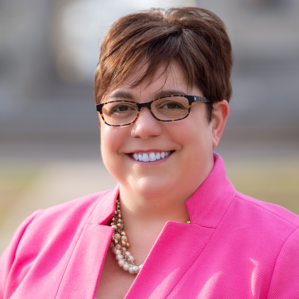College initiates Phase I of Action Plan for Diversity
Released to the campus community at large on Jan. 23 was Allegheny’s Action Plan for Diversity and Inclusion, Phase I, designed to make the community a safer, more inclusive and diverse community by addressing concerns voiced in the fall semester of 2014.
The Plan identifies the Oct. 3 forum, following Kirk Nesset’s arrest, as key in identifying the areas where improvement was needed.
According to Ande Diaz, Allegheny’s associate provost for diversity and organizational development, these issues were prioritized by the campus administrators in the fall to determine institutional methods for addressing them.
“This fall, there were a number of conversations, both large and small, where it became clear that there were really some deep issues that were talked about in the community,” Diaz said. “…Those themes that were introduced in the fall were then prioritized later in the fall and that structure helped guide Phase I.”
The other thing that this plan does is that it clearly says we’re accountable to implement it and if we don’t, we should have to answer for it.
— James Mullen
Written by the Administrative Executive Committee, the Plan identifies five themes as its focus: (1) Safety, (2) Community and Campus Climate, (3) Leadership, (4) Recruitment and Retention and (5) Communication and Transparency. Included in the plan is a description, labeled “Context,” of what Allegheny has done up to this point in addressing concerns. Following this is a section called “Action Steps,” in which specific future steps are identified along with the departments on campus responsible for assisting these changes.
According to President James Mullen, this is part of the inherent strength of the Action Plan.
“I think what’s strong about it is…it sets down what we have done to this point in a coherent way, and I think that’s important because we were doing a number of important things but this connects the dots,” Mullen said. “Second, it did come out of a lot of conversation…I think there are concrete steps in every area that are going to make us a more inclusive place.”
As an example, under the theme of Communication and Transparency, the Action Plan states, “Context. The College has not done as well as it might have to communicate its diversity efforts. Community members have stated that they do not know the current state of Allegheny’s work on diversity…This lack of community knowledge hinders our efforts; increased communication and awareness will advance our shared goals.”
A large part of the Action Plan, according to President James Mullen, is transparency and how that will ultimately serve the goals outlined.
“I think the key to implementing a plan like this is for it to be transparent and continue to be a visible priority of the institution, to allow conversation to continue and voices to be heard,” Mullen said. “…We just need to continue to transparently move forward on the initiatives you see here and developing that next set for Phase II.”
Using this transparency is also crucial for designing Phase II, which Diaz hopes will be more collaborative with the Allegheny community at large.
“Phase II is something that will be community-engaged, where anyone who wants to have a role can have a role. In Phase II, we really invite broad participation,” Diaz said. “I would personally like to invite academic departments, student clubs, administrative and staff groups to all be part of helping to change the culture, make it more inclusive and welcoming.”
However, part of the challenge for Phase II will be ensuring that the changes outlined in the Action Plan take hold and prosper in the community, acting as a more long-term phase for maintaining the campus climate.
“We want to…look at how we sustain it over time but certainly those five themes will be the overarching principles that we’ll be thinking about,” Diaz said. “…But it’s not something that is ever concluded because a lot of the Action Steps will be part of the campus practices: ongoing trainings or ongoing ways of recruiting and retaining diverse students.”
Regardless of the scope of the Action Plan, the college will be dedicated to making the necessary commitments to fully address the campus’ concerns, said Mullen.
“We’ve created [Diaz’s Diversity Innovation] Fund to help make initiatives go forward, I think that’s another commitment of resources. We will commit the resources we need to get this done,” said Mullen.
The collaborative nature of the Action Plan also allows for ease of community conversation, which served a crucial role in the invention of the plan and will likely affect where the campus goes from here. Concerns and comments, from anyone in the community, are expected by the administration as primary feedback for the success or shortcomings of the Action Plan.
“The other thing that this plan does is that it clearly says we’re accountable to implement it and if we don’t, we should have to answer for it…Ultimately, if we’re not getting it done, students are going to tell us that we’re not getting it done and I’m going to hear that. It’s my job to respond to that,” Mullen said.
The entirety of Phase I can be found on the Allegheny website at: http://sites.allegheny.edu/diversity/action-plan-for-diversity-and-inclusion-phase-1/








